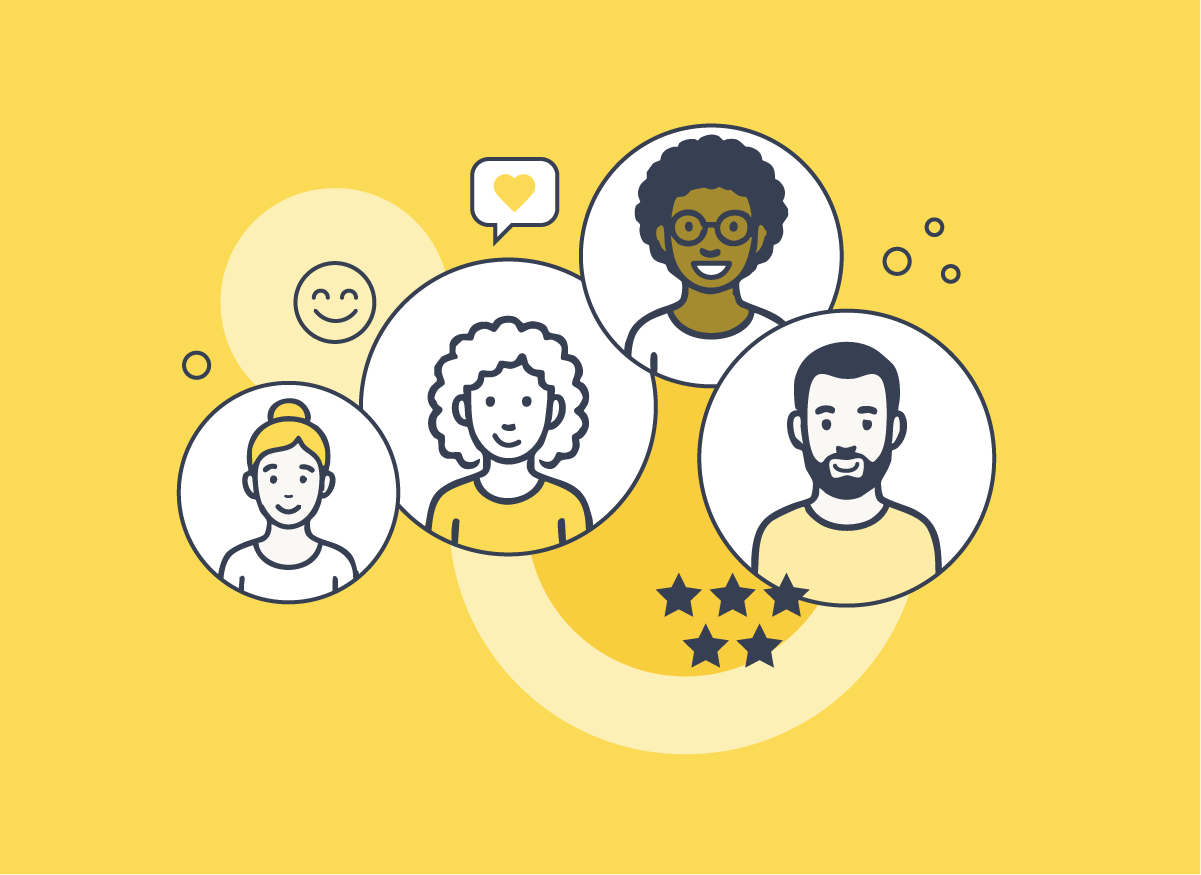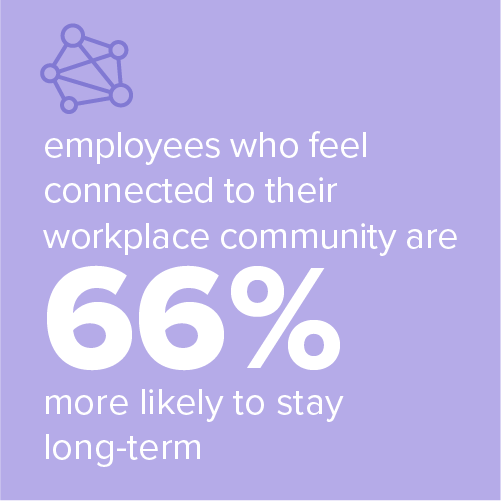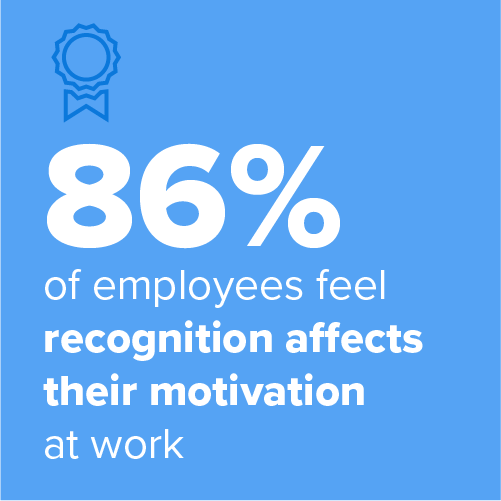
They say everyone is replaceable - but losing one of the top performers, leaders, or a group of employees at any company can send a shockwave through the organization.
Employee retention is crucial in today’s market because having to replace someone of that caliber (or even a new employee) will likely have a large impact on everything from daily operations to delivering on strategic goals.
It’s very difficult to quantify the amount of time, effort, and money it will take to replace them. But according to studies from Gallup, “The cost of replacing an individual employee can range from 50% to 200% of the employee's annual salary, and that's a conservative estimate.”

Modern day employees have high expectations for their company culture and workplace. It’s become increasingly more important to evaluate what you’re currently doing and listen to their needs if you want to bring in and keep the best in your industry.
Many business leaders are still under the false impression that pay is the main employee happiness driver. Some understand the importance of flexibility. Fewer realize the power of improving the daily experience.
Review the five employee retention strategies below and confirm your business is doing everything it can to retain top talent:
Let's start with the obvious one. Competitive compensation still remains one of the biggest retention drivers, and for good reason. If your salaries aren't keeping pace with the market, no amount of pizza parties will keep employees from exploring new opportunities.

Today's employees are looking for the total package. That includes both traditional benefits like health insurance or retirement plans and also the perks that impact their quality of life. For example:
The key is going to be building a benefits package that addresses both the big-picture financial security and the day-to-day realities of working at your company.

Culture isn't just a buzzword, it's the almost indescribable feeling of camaraderie and happiness that employees feel when they walk through the door each morning. And according to research, employees who feel connected to their workplace community are 66% more likely to stay with their organization long-term.
Real community happens through consistent, face-to-face interactions. It happens when people from different departments sit down and talk to each other. When the engineering team shares a table with marketing or when the new hire finds themselves chatting with a senior leader over coffee.
The problem? In many offices, departments operate in silos. People eat lunch at their desks, staring at screens. They grab something quick and head back to their corner of the building. These missed opportunities for connection add up to a workplace that feels transactional rather than communal.
Creating dedicated spaces where people naturally gather changes this dynamic. A well-designed cafeteria or dining area becomes a place where collaboration happens naturally.
When employees feel like they're part of something bigger than their individual role, retention follows naturally. They're not just staying for a job, they're staying for the people and the environment you've created together.
Career growth is non-negotiable for today's workforce. Employees who can't see a clear path forward at your company will find it somewhere else. Even employees with incredible growth potential will burn out if they're constantly stressed and overwhelmed.

Professional development and work-life balance don’t have to be competing priorities. Your high-potential employees need opportunities to learn, grow, and advance but it won’t mean much if they can’t maintain their mental and physical health while doing it.
This is where many retention strategies fall short. Companies invest in training programs and leadership development, which is great. But they overlook the daily stressors and support systems that allow employees to actually take advantage of those opportunities without sacrificing that balance.
Here's what a comprehensive approach to professional growth and work-life balance looks like:
Professional development shows employees that you value their future. Thoughtful work-life balance support shows them you value their present. Do both well, and you've created a workplace where people want to build their careers.

Recognition is one of the most underutilized retention tools in any company's playbook. Studies show that 83.6% of employees feel recognition affects their motivation to succeed at work. But recognition is more than performance reviews with bonuses, it’s about reinforcing that their contributions are important to the company.
When employees can directly see how they’re making an impact, they’ll become more loyal to the role and want to stay in it for as long as they can. Here’s three simple ways to recognize performance and improve employee retention rates:
When it comes to employee retention, sometimes the little things like feeling seen, being included, and having your contributions acknowledged can matter most. People want to stay where they feel they belong.
Your employees spend the majority of their waking hours at work. The quality of those hours has a massive impact on retention, yet it's often the most overlooked piece of the puzzle.
Companies pour resources into recruitment strategies, branded swag, and bonuses while missing the fact that employees are making their stay-or-go decision based on how they’re feeling when they walk out at 5:00 pm.
Here are some of the most important daily touchpoints:
Competitors can match your salary. They can copy your benefits package. But they can't easily recreate the feeling of being somewhere that consistently makes your daily life fulfilling.
If you've made it this far, you've probably noticed a theme: employee retention isn't one thing done right. It's many things done well, working together to create an environment where talented people choose to stay.
Competitive pay keeps you in the game. Growth opportunities give people a reason to invest their future with you. Flexible benefits address their diverse needs. Strong culture creates connection. These are your foundational building blocks for employee retention.
If you're serious about improving retention, one quick way to make the work day easier is improving your current approach to workplace dining. What are your employees experiencing today? Are they well-served, or are they making it work despite limited options?
It starts with evaluating your current solution and learning how to design a new workplace food program that meets the wants and needs of your company.

That’s where Fooda comes in. We specialize in modern workplace food services designed specifically around what today's employees actually want: high-quality food from local restaurants at an affordable price point.
Whether you're looking for a full cafeteria operation, rotating restaurant Popups, meal delivery, or a pantry solution, we can help you create a dining experience that supports your employee retention goals.
At the end of the day, retaining top talent isn't just about the big strategic moves. It's also about showing up for your employees in the daily moments that matter. And few things matter more consistently than making sure they're well-fed, well-supported, and genuinely valued.
Track your turnover rate, average employee tenure, and exit interview themes. Conduct regular employee satisfaction surveys about daily experience and culture. Get a tangible metric by uncovering your employees’ Net Promoter Score (NPS) by asking the question, “would you recommend us as an employer to a friend or colleague"? Most importantly, pay attention to whether you're keeping your high performers - if overall retention improves but you're still losing top talent, your strategy needs adjustment.
Workplace dining impacts retention in multiple ways. It reduces daily stress and decision fatigue, saves employees money, creates natural spaces for community building and cross-department connection, and demonstrates that leadership cares about daily wellbeing